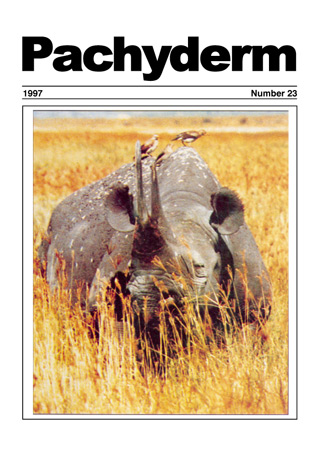Elephants and woodlands in northern Botswana: how many elephants should be there?
Abstract
Elephants and fire appear to have a pivotal role in the dynamics of certain woodland types in northen Botswana. This study chose mopane to demostrate the effects of elephants on woodlands because much of the elephants range is within mopane woodlands and this species is a principal food. Elephants in this region tend to converge around water sources and reach high densities, particularly towards the end of the dry season. Biomass reduction as opposed to mortality was examined through elephant off-take and growth rates of plants, and mathematical modelling was done to make predictions regarding impact of elephants. In spite of predictions from other areas this study suggests that from an ecological perspective northern Botswana can sustain well beyond the maximum number (60000) set by DWNP in 1991. As there is no substantial evidence to imply elephants will diminish woodlands below a sustainable level. Culling as a means to prevent woodland loss is not at present a plausible argument. The ecological aspect of the 'elephant problem' in northern Botswana is confined to areas of interest to people where elephants seem to have an excessive impact such as Chobe, Khwai and Linyanti River fronts. A management policy based on the ecological balance between elephants and woodlands would best consider habitats dominated by specific woody plant species where managers perceive a desired vegetation composition and structure to be maintained.
Downloads
Published
How to Cite
Issue
Section
License
Copyright (c) 1997 Raphael Ben-Shahar

This work is licensed under a Creative Commons Attribution-NonCommercial 4.0 International License.




